Product
Location:Home > Product > Geotextile

Scan QR code
Short fiber needle punched nonwoven geotextile is mainly a permeable geotextile made from high-quality polyester and polypropylene fibers through needle punching. It has good mechanical functions, good water permeability, and can resist corrosion.
Material: PET/PP Width: 1-6M Weight: 100-800 g/m2
Thickness: 1.0-5.0 mm
Customization: Various specifications can be processed and customized according to customer requirements
Function:
1. Filtration
2. Underground drainage
3. Road separation/railway stability
4. Geomembrane buffering
5. Reinforcement
6. Protection
Application:
1. Road stability construction 2. Roof 3. Civil construction
4. Railway construction 5. Garbage landfill 6. Dam, etc
Short fiber needle punched nonwoven geotextile is mainly a permeable geotextile made from high-quality polyester and polypropylene fibers through needle punching. It has good mechanical functions, good water permeability, and can resist corrosion.

Isolation function
Isolate building materials with different physical properties to prevent loss or mixing between two or more materials, maintain the overall structure and function of the materials, and enhance the load-bearing capacity of the structure
Filtering function
When water flows from the fine soil layer to the coarse soil layer, the good breathability and water permeability of needle punched geotextiles are utilized to allow water flow through, effectively intercepting soil particles, fine sand, small stones, etc., in order to maintain the stability of water and soil engineering
Drainage function
Needle punched geotextile is a good water conducting material, which can form drainage channels inside the soil and remove excess liquids and gases from the soil structure
Reinforcement function
Utilizing needle punched geotextiles to enhance the tensile strength and deformation capacity of soil, enhance the stability of building structures, and improve soil quality
Protective function
Effectively diffuse, transfer, or decompose concentrated stress to prevent soil from being subjected to external forces
Closed function
It can be widely used for filtering, drainage, protection, reinforcement, protection, sealing, etc. in railway, highway, sports hall, dam, water and soil construction, tunnel, coastal mudflat, reclamation, environmental protection and other projects
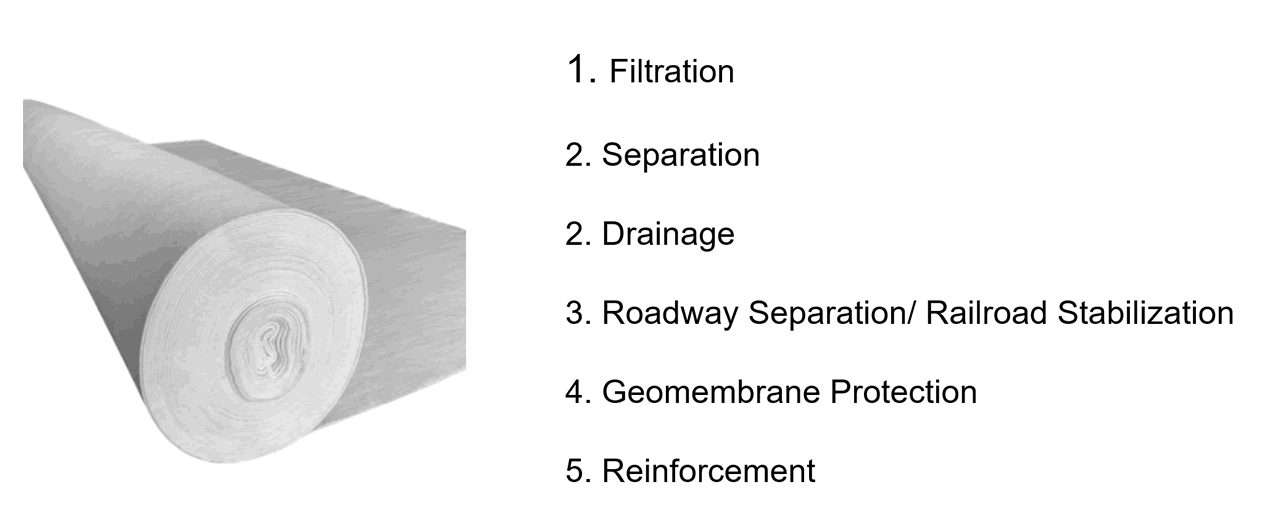
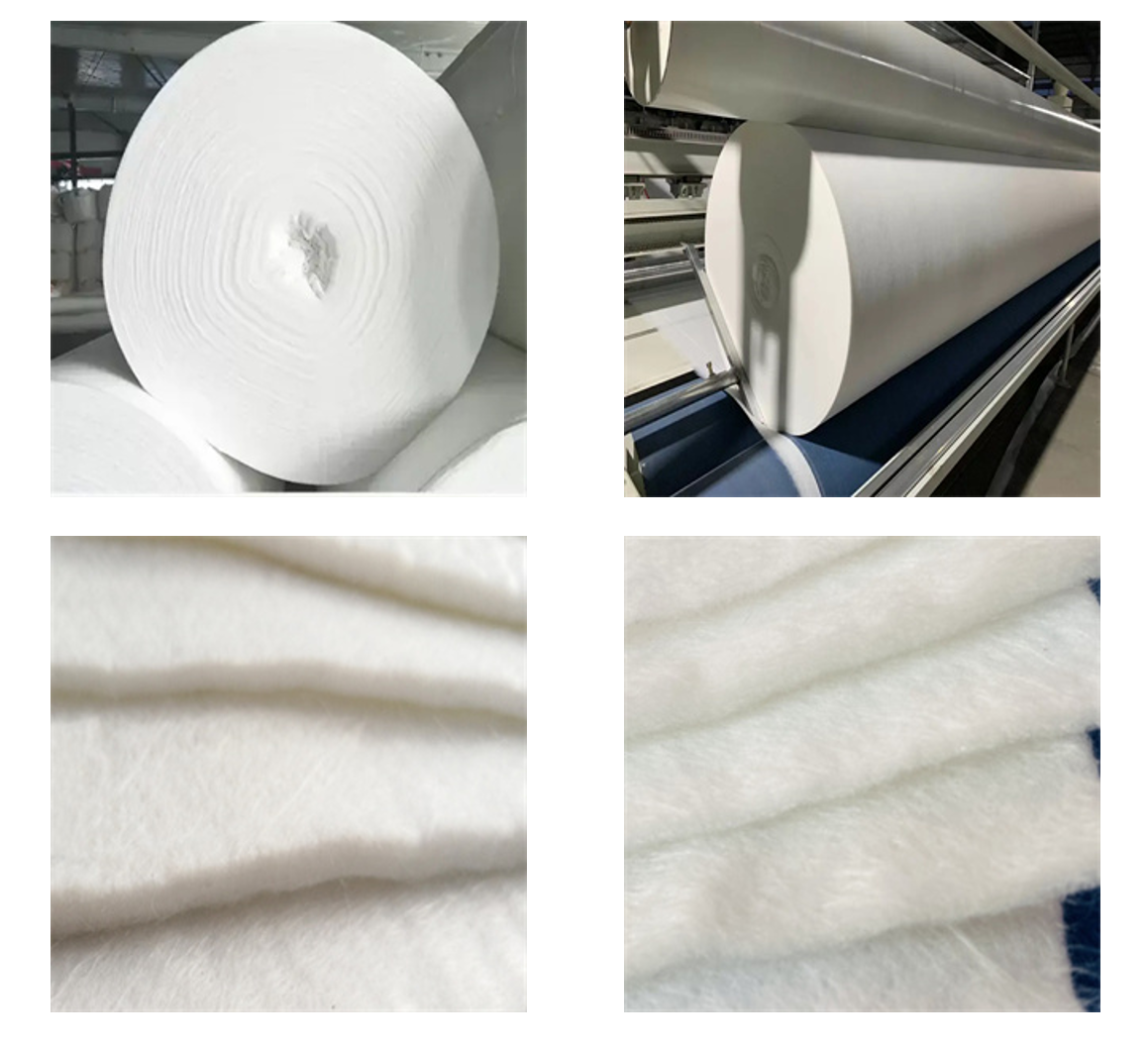
Specifications(g/m2) | 100 | 150 | 200 | 250 | 300 | 350 | 400 | 450 | 500 | 600 | 800 | Notes |
Project | ||||||||||||
Mass deviation per unit area(%) | -8 | -8 | -8 | -8 | -7 | -7 | -7 | -7 | -6 | -6 | -6 | - |
Thickness≥(mm) | 0.9 | 1.3 | 1.7 | 2.1 | 2.4 | 2.7 | 3 | 3.3 | 3.6 | 4.1 | 5 | - |
Width deviation(%) | -0.5 | - | ||||||||||
Breaking Strength≥(kN/m) | 2.5 | 4.5 | 6.5 | 8 | 9.5 | 11 | 12.5 | 14 | 16 | 19 | 25 | Vertical and horizontal direction |
Elongation At Break(%) | 25-100 | |||||||||||
CBR bursting strength≥(kN) | 0.3 | 0.6 | 0.9 | 1.2 | 1.5 | 1.8 | 2.1 | 2.4 | 2.7 | 3.2 | 4 | - |
Equivalent Aperturemm | 0.07-0.2 | - | ||||||||||
Vertical permeability coefficient(cm/s) | Kx(0.1-0.001) | K=1.0-9.9 | ||||||||||
Tearing strength≥(kN) | 0.08 | 0.12 | 0.16 | 0.2 | 0.24 | 0.28 | 0.33 | 0.38 | 0.42 | 0.46 | 0.6 | Vertical and horizontal direction |
(1) Used for reinforcement in backfill of retaining walls, or for anchoring panels of retaining walls. Build wrapped retaining walls or abutments.
The Application of Geotextiles in Construction
(2) Strengthen the flexible road surface, repair cracks on the road, and prevent reflective cracks on the road surface.
(3) Increase the stability of crushed stone slopes and reinforced soil to prevent soil erosion and frost damage to soil at low temperatures.
(4) The isolation layer between road ballast and roadbed, or the isolation layer between roadbed and soft foundation.
(5) The isolation layer between artificial fill, rockfill, or material yard and foundation, as well as the isolation between different frozen soil layers. Anti filtration and reinforcement effects.
(6) The filter layer of the initial upstream dam surface of the ash storage dam or tailings dam, and the filter layer of the drainage system in the backfill soil of the retaining wall.
(7) The filter layer around the drainage pipe or gravel drainage ditch.
(8) The filter layer of water wells, pressure relief wells, or inclined pipes in hydraulic engineering.
(9) The isolation layer of geotextile between roads, airports, railway tracks, and artificial rockfill and the foundation.
(10) Vertical or horizontal drainage inside the earth dam, buried in the soil to dissipate pore water pressure.
(11) Drainage behind the anti-seepage geotextile membrane or below the concrete cover in an earth dam or embankment.
(12) Eliminate water seepage around the tunnel, reduce the external water pressure borne by the lining, and reduce water seepage around various buildings.
(13) Drainage of artificial fill foundation for sports field foundation.
(14) Used to strengthen weak foundations in projects such as highways (including temporary roads), railways, embankments, earth-rock dams, airports, sports fields, etc.
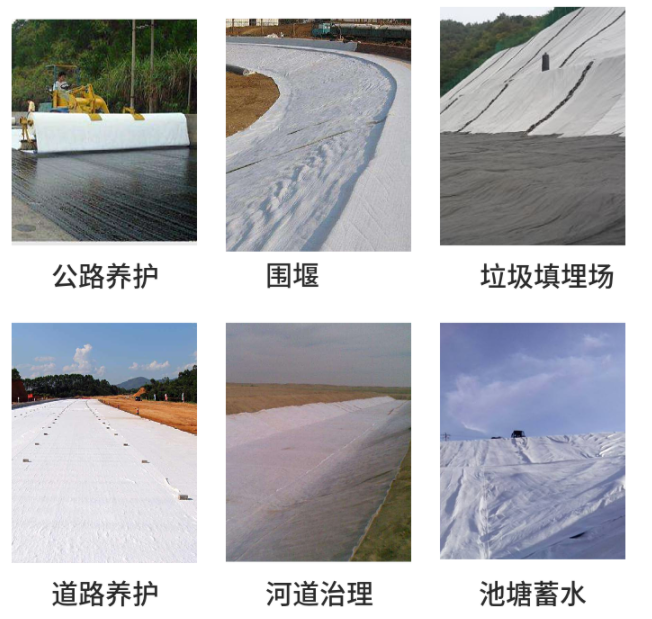
1. Storage, transportation, and disposal of geotextiles
The geotextile roll should be protected from damage before installation and unfolding. Geotextile rolls should be stacked in a flat and waterlogged area, with a height of no more than four rolls and visible identification plates of the rolls. Geotextile rolls must be covered with opaque material to prevent UV aging. During storage, it is important to maintain the integrity of the labels and information.
During the transportation process (including on-site transportation from the material storage location to the work site), the geotextile roll must be protected from damage.
Geotextile rolls that have been physically damaged must be repaired. Geotextiles that are severely worn cannot be used. Any geotextile that comes into contact with leaked chemical reagents is not allowed to be used in this project.
2. Laying method of geotextile:
2.1 Manual rolling and paving; The fabric surface should be flat and have appropriate deformation allowance.
2.2 The installation of long or short wire geotextiles usually involves several methods such as overlap, stitching, and welding. The width of stitching and welding is generally above 0.1m, and the overlap width is generally above 0.2m. Geotextiles that may be exposed for a long time should be welded or sewn together.
2.3 Suturing of Geotextiles
All stitching must be continuous. Before overlapping, the geotextile must overlap by a minimum of 150mm. The minimum needle distance from the edge of the fabric (exposed edge of the material) should be at least 25mm.
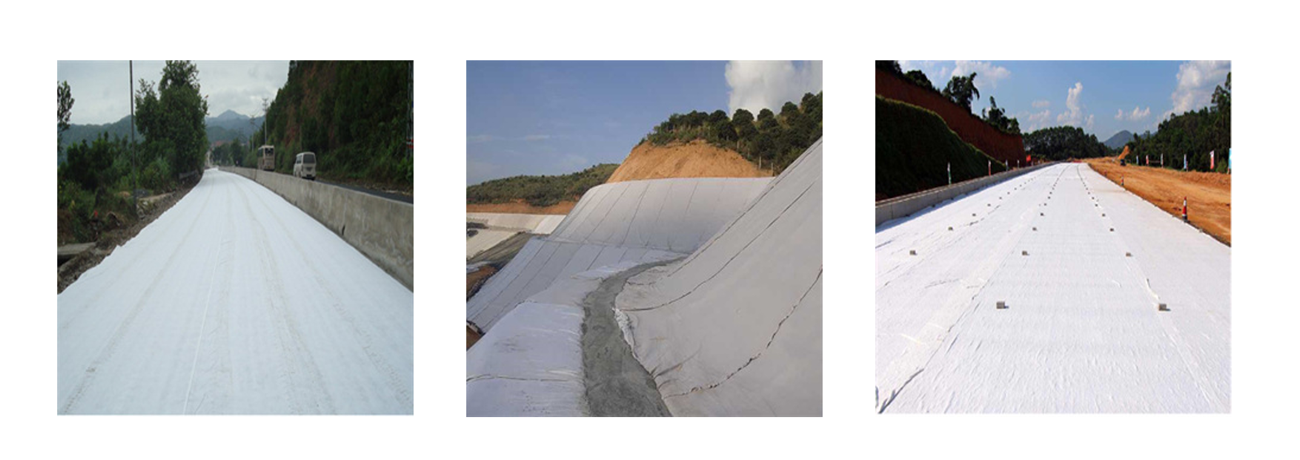
Pay attention to the following issues:
① The laying of geotextile should be as flat as possible to avoid twisting and wrinkling, and should be kept smooth and moderately loose. The geotextile and the base layer should be pressed flat and tightly, avoiding overhead and removing bubbles to ensure safety.
② The geotextile should be properly stored during transportation and upon arrival at the construction site. Although it is non-woven geotextile, it should be avoided from prolonged exposure to sunlight, prevented from bonding into blocks, and stored in an undamaged and convenient place to minimize loading and unloading times.
③ The splicing method and overlapping length of geotextile should meet the requirements of the construction drawings.
④ Before the construction of geotextile joints, process tests should be conducted to ensure that the joint quality meets the design requirements and specifications.
⑤ The geotextile splicing site should be clean and tidy to prevent sharp and hard debris from puncturing the geotextile. The processed geotextile should be kept away from light.
⑥ Before laying, clean the laying surface, remove sharp stones, and do not damage the geotextile. If there is any damage, it should be repaired.
⑦ When laying, it is necessary to ensure the accurate position of the geotextile, and the sand bag should be promptly thrown to prevent displacement of the geotextile.
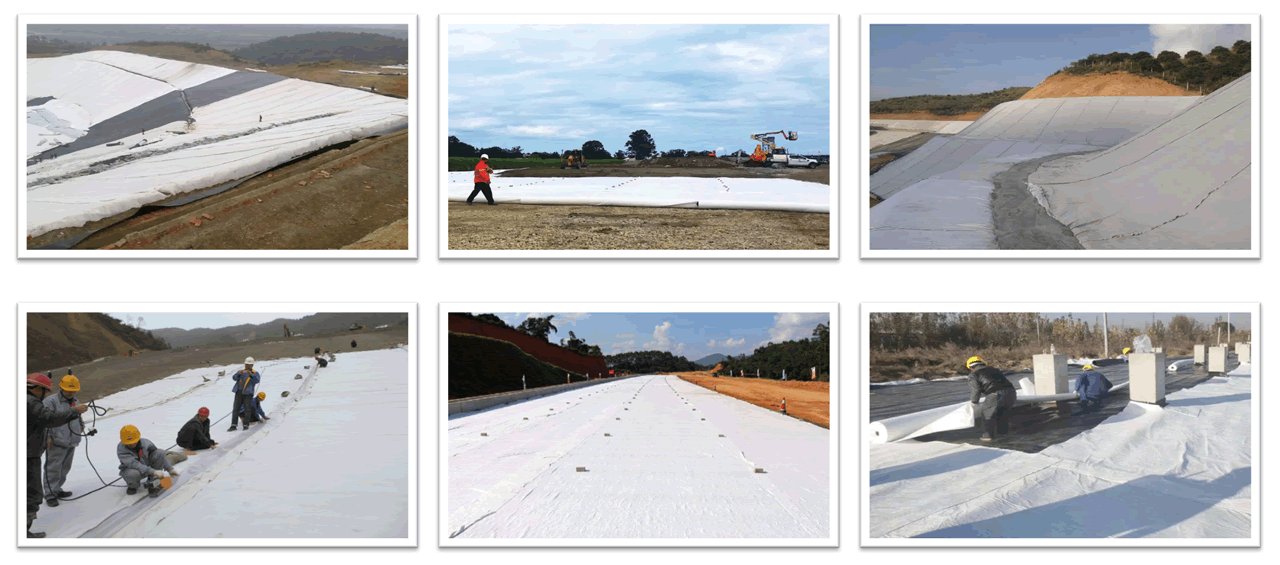
Previous : Polyester filament geotextile
Hot Keywords:GeocellGeogridGeotexileGeocompositeGeomatGeomembrance